 W
WThe AB-Aktion, was a second stage of the Nazi German campaign of violence during World War II aimed to eliminate the intellectuals and the upper classes of the Second Polish Republic across the territories slated for eventual annexation. Most of the killings were arranged in a form of forced disappearances from multiple cities and towns upon the German arrival. In the spring and summer of 1940, more than 30,000 Polish citizens were arrested by the Nazi authorities in German-occupied central Poland, the so-called General Government. About 7,000 of them including community leaders, professors, teachers and priests were subsequently massacred secretly at various locations including at the Palmiry forest complex near Palmiry. The others were sent to Nazi concentration camps.
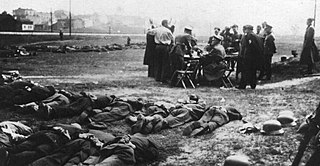 W
WThe Bloody Wednesday of Olkusz or Bloody Wednesday in Olkusz was perpetrated by the German occupiers in Olkusz on July 31, 1940, during World War II, in which a number of Polish civilians were murdered.
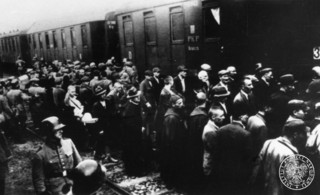 W
WThe first mass transport of prisoners by Nazi Germany to Auschwitz Concentration Camp was organized in occupied Poland on 14 June 1940 during World War II. The transport departed from the southern Polish city of Tarnów, and consisted of 748 Poles. They were dubbed 'political prisoners' and members of the Polish resistance. Most were Catholics, since the mass deportations of Jews had not yet begun. All were sent to Auschwitz by the German Sicherheitspolizei Security Police. They were transported there from a regular prison in Tarnów, where they had been incarcerated as enemies of the Nazi regime. Numbers were tattooed on the prisoners' arms in the order of their arrival at Auschwitz. These inmates were assigned the numbers 31 through 758, with numbers 1 through 30 having been reserved for a group of German criminals, who were brought to Auschwitz from Sachsenhausen, on 20 May and became the first Auschwitz kapos.
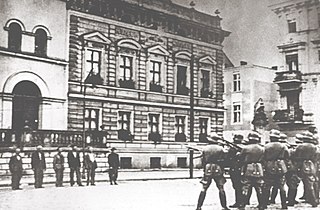 W
WThe Intelligenzaktion, or Intelligentsia mass shootings, was a mass murder conducted by Nazi Germany against the Polish intelligentsia early in the Second World War (1939–45). The operations were conducted to realise the Germanization of the western regions of occupied Poland, before territorial annexation to the German Reich.
 W
WThe Intelligenzaktion Pommern was a Nazi German operation aimed at the eradication of the Polish intelligentsia in Pomeranian Voivodeship and the surrounding areas at the beginning of World War II. It was part of a larger genocidal Intelligenzaktion, that took place across most of Nazi-occupied western Poland in the course of Operation Tannenberg, purposed to install Nazi officials from SiPo, Kripo, Gestapo and SD at the helm of a new administrative machine.
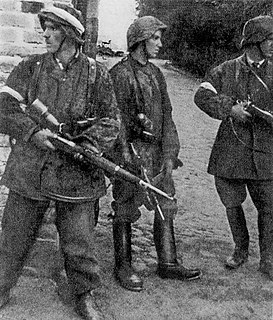 W
WKonfederacja Narodu was one of the Polish resistance organizations in occupied Poland during World War II. KN was created in 1940 by the far-right National Radical Camp Falanga (ONR-Falanga) political party from several smaller underground organizations, including the Secret Polish Army (TAP). In the political realm it was opposed to more center and sanacja-related mainstream resistance organizations. It would never attract major support and would remain marginal, eventually partially merging with ZWZ around 1941 and finally joining Armia Krajowa around fall 1943.
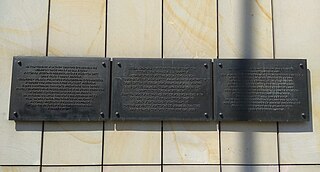 W
WThe Lipowa 7 camp was a Nazi forced labor concentration camp, primarily for Jews, by Lipowa Street in Lublin, Poland during December 1939 - 1944. In November 1943 nearly all Jewish inmates were exterminated.
 W
WThe Lublin airfield camp was a Nazi forced labor concentration camp, primarily for Jews, at the airfield in Lublin, Poland during 1942–1943, with its prehistory starting from 1939. It also employed and detained (non-Jewish) Polish women. It is also referred to as "(Lublin) airstrip camp", "Flugplatz labor camp", "Alter Flugplatz lager", etc.
 W
WThe massacres in Piaśnica were a set of mass executions carried out by Nazi Germany during World War II, between the fall of 1939 and spring of 1940 in Piaśnica Wielka in the Darzlubska Wilderness near Wejherowo. The exact number of people murdered is unknown, but estimates range between 12,000 and 14,000 victims. Most of them were Polish intellectuals from Gdańsk Pomerania, but Poles, Jews, Czechs and German inmates from mental hospitals from the General Government and the Third Reich were also murdered. After the Stutthof concentration camp, Piaśnica was the largest site of killings of Polish civilians in Pomerania by the Germans, and for this reason, is sometimes referred to as the "second" or "Pomeranian" Katyn. It was the first large scale Nazi atrocity in occupied Poland.
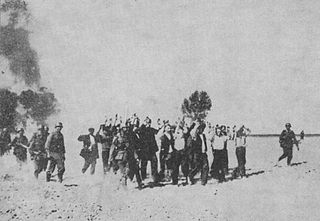 W
WThe pacification actions in German-occupied Poland during World War II were one of many punitive measures designed to inflict terror on the civilian population of local villages and towns with the use of military and police force. They were an integral part of the war of aggression against the Polish nation waged by Nazi Germany since September 1, 1939. The projected goal of pacification operations was to prevent and suppress the Polish resistance movement in World War II nevertheless, among the victims were children as young as 1.5 years old, women, fathers attempting to save their families, farmers rushing to rescue livestock from burning buildings, patients, victims already wounded, and hostages of many ethnicities including Poles and Jews.
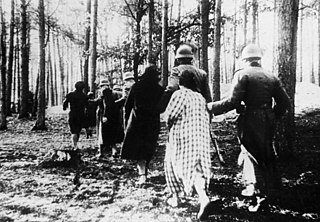 W
WThe Palmiry massacre was a series of mass executions carried out by Nazi German forces, during World War II, near the village of Palmiry in the Kampinos Forest northwest of Warsaw.
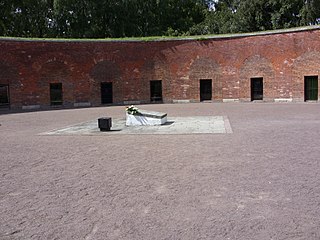 W
WThe Rotunda Zamość or the Museum of Martyrdom of the Zamość region - Rotunda, is a Polish museum devoted to remembering the atrocities committed at the former Rotunda Zamość Nazi German camp located in Zamość near Lublin. The Nazi German Gestapo camp was set up in occupied Poland during World War II, as part of the Polish extermination program known as the German AB-Aktion in Poland, Ethnic cleansing of Zamojszczyzna by Nazi Germany....
 W
WThe Soldau concentration camp established by Nazi Germany during World War II was a concentration camp for Polish and Jewish prisoners. It was located in Działdowo, a town in north-eastern Poland, which after the Nazi-Soviet invasion of Poland in September 1939 was annexed into the Province of East Prussia.